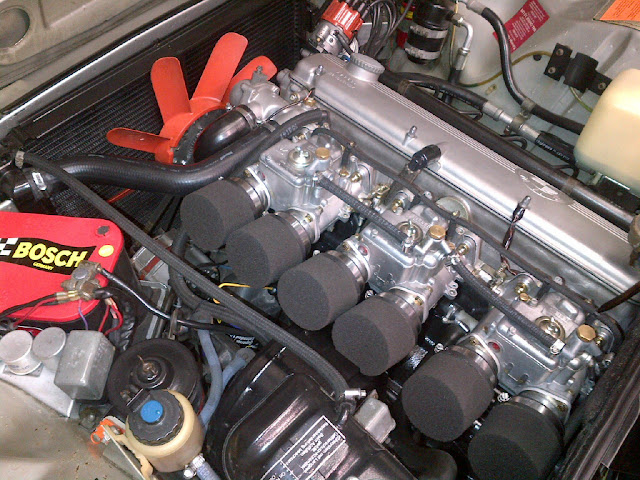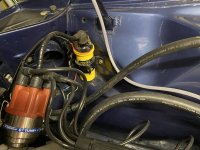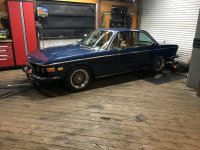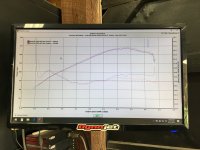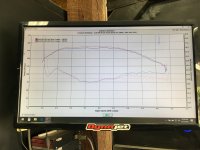This morning I experimented with the vacuum advance and the "gear shift retard" theory. With my previous advance curve, it woud add 8 degrees at any vacuum over 6hg or so. This is good for idle and cruising, but in between shifts, the vacuum jumps higher than the idle or cruise levels so it signals the distributor to add advance. So if you're on the throttle and you let up on the pedal between shifts, the advance is too high when you slam back on the gas, it has to sense the dropping vacuum and adjust accordingly and therefore there is a short lag period. By setting the curve to drop out past a certain vacuum level, the timing does not change with very high vacuum, it stays where it is supposed to be with centrifugal/rpm. As a result the timing is right where it should be when going into next gear. The result is a crisper shift. Here is the curve I am using now:

Compared to the previous curves, you can see the addition of advance between the desired vacuum levels, keeping cruise and idle advance in tact within the bell curve, and dropping out under load (on the right) and in between shifts (on the left). The vacuum levels to determine these points are read off the dashboard display's vacuum gauge under various driving conditions.
The engine now pulls stronger into the next gear.
Steve--Doug McKenzie told me to look at your 123 curves. I had the shop set up my 123 and the car runs great and pulls in all 5 gears. I have the blue tooth and haven't even looked at the set-up. Doug drove my car last weekend and said it's fine as it is. They removed the ballast resistor when the 123 was installed. The Accell dizzy was running on OEM points. The coil is also an Accell brand . I want to put in my 12 V blue Bosch coil that I put in my 2002 over 40 years ago. The car has been in the garage for 25 years under a cover. Your thoughts? What's the difference between a blue and red coil? I assume I don't need to install the ballast resistor.
Also, all of your curve images are blanked out as I read this 4 page post. Any Idea why I can't see them? Here's a pic of the coil that's in the car now.
Thanks,
Drew

